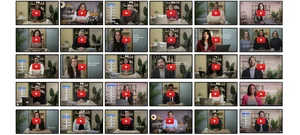Setting the record straight on news
We care about quality journalism because it helps create a more informed world. A strong fourth estate is important for society and democracy. But the truth is the business model for news that worked 40 years ago is facing enormous challenges today. The Internet has changed how we access information, providing new sources for everything from job listings to movie reviews. Given this vast marketplace of information and services, news businesses are having to reinvent themselves.
As a company with a mission focused on making information universally accessible, we are invested in helping journalism not only survive, but thrive. Alongside other companies, governments and civic society groups, we are playing our part in enabling a better future for news. And in light of some recent inaccurate claims about how Google works with the news industry and our value exchange with publishers, we felt it was important to set the record straight.
The value of news to Google is not economic—it’s societal.
Quality journalism is important to providing people access to authoritative information. The value of news to Google is about informing and educating, not economics. Nearly all of our revenue comes not from news queries, but from queries with commercial intent, like someone searching for a new “toaster” and clicking on an ad. Google gets paid for search ads only when someone clicks on one.
We compensate publishers fairly in a number of different ways.
Sending people to publishers' news sites—not keeping them “walled” up on Google products, as some claim—is a key way we provide value to the news industry. Every month we send Google users to news sites 24 billion times, providing an opportunity for publishers to grow their audiences and show Google’s users ads or offers for subscriptions. Deloitte puts a value of each click for large publishers at roughly between 4-7 U.S. cents.
We also invest in ad technologies that thousands of news publishers around the world choose to use to grow their digital advertising businesses. We analyzed the revenue data of 100 news publishers globally with the highest programmatic revenue generated in Google Ad Manager. On average, we found news publishers keep over 95 percent of the digital advertising revenue they generate when they use Ad Manager to show ads on their websites.
And in a significant move to help news publishers succeed, we just announced a new licensing program to pay for content for a news product launching later this year. This will include paying for free access to paywalled articles. We’ve signed partnerships with publishers in Germany, Australia and Brazil, and are in discussions to expand to more partnerships and countries in the coming weeks and months.
Publishers are in the driver’s seat.
There are many ways newspaper publishers find audiences for their content. Search is only one. Publishers have always been able to control if and how they want to appear on Google, and fine-grained settings allow them to optimize the value they get from Search to achieve their business goals. For example, publishers who want snippets in their search results but don’t want to be used as a Featured Snippet at the top of the page can tell Google to keep their snippets short. Publishers who like text snippets but think images don’t help them attract user traffic can tell Google not to use images.
We respect publishers’ copyright.
Google Search has evolved since its early beginnings, but one thing that hasn’t changed is the fundamental fair exchange between Google and the web. Google crawls, indexes and links to websites in search results, and each search result includes a short preview of what to expect at the site. Websites gain free traffic from users interested in what they have to offer, and each user visit is an opportunity to build a long-term relationship and monetize through advertising or subscriptions.
In decisions spanning more than a decade, the courts have recognized that search is a non-infringing fair use under U.S. copyright law (and similar doctrines elsewhere), whether the search includes image thumbnails, snippets or even digitized copies of books. Fair use is an essential engine of U.S. invention and creativity; it allows copyright law to keep pace with “rapid technological change” and, according to court rulings, serves copyright’s fundamental purpose to “promote the Progress of Science and the Useful Arts.”
We build technology to improve how our products work for users and help the wider web.
Five years ago it took an average of 19 seconds to load a page on a mobile browser. Most users wouldn’t wait that long and would navigate elsewhere. This hurt publishers who miss out on building a relationship with the user and making money by showing them ads. News publishers asked us to help find a solution. Instead of building a format to work just on Google, we combined forces with publishers and other tech companies to improve the mobile web for everyone. That was how the Accelerated Mobile Pages Project, or AMP, was born.
AMP was a collaboration from the start, and continued in that spirit as we evolved the framework to address both opportunities and shortcomings and tackle the issues as they arose.
Following feedback from publishers who wanted to participate in our Top Stories Carousel feature in Google Search without using AMP, we recently announced page performance signals. This change will allow all qualifying web content to be eligible for this feature while keeping a high-quality user experience as a top priority.
Google AMP Cache and AMP viewers are designed to accelerate delivery of content—not collect data. A publisher’s cached article page is in every way their page. The publishers' ability to collect data is not limited. All the usage data flows to them, and AMP does not diminish their revenue.
While AMP was always an open-source project, in 2018 it launched a new governance model, and recently the project leadership transitioned to the OpenJS Foundation. Find out more about the origins and history of the AMP project in this blog post.
We hope these facts contribute to a constructive discussion of how the news industry is evolving to meet the challenges and the needs of users in an increasingly digital world. We want to be both part of the conversation and the solution.







